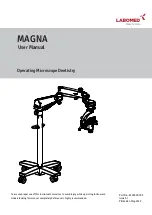
BBT60A
WARNING
For testing 12 volt batteries, and for testing 12 and 24 volt charging systems.
Suggested operation range 0ºC (32ºF) to 50ºC (122ºF) in ambient temperature.
WARNING: This product can expose you to chemicals including arsenic, which is known to the State of
California to cause cancer.
1. Working in the vicinity of a lead acid battery is dangerous. Batteries generate explosive gases during normal
battery operation. For this reason, it is of utmost importance, if you have any doubt, that each time before using
your tester, you read these instructions very carefully.
2. To reduce risk of battery explosion, follow these instructions and those published by the battery manufacturer
and manufacturer of any equipment you intend to use in the vicinity of the battery. Observe cautionary markings
on these items.
3. Do not expose the tester to rain or snow.
PERSONAL SAFETY PRECAUTIONS
1. Someone should be within range of your voice or close enough to come to your aid when you work near a lead
acid battery.
2. Have plenty of fresh water and soap nearby in case battery acid contacts skin, clothing or eyes.
3. Wear safety glasses and protective clothing.
4. If battery acid contacts skin or clothing, wash immediately with soap and water. If acid enters eye, immediately
flood eye with running cold water for at least ten minutes and get medical attention immediately.
5. NEVER smoke or allow a spark or flame in vicinity of battery or engine.
6. Be extra cautious to reduce risk of dropping a metal tool onto the battery. It could spark or short-circuit the
battery or other electrical parts and could cause an explosion.
7. Remove personal metal items such as rings, bracelets, necklaces and watches when working with a lead acid
battery. It can produce a short circuit current high enough to weld a ring or the like to metal causing a severe
burn.
PREPARING TO TEST
1. Be sure area around battery is well ventilated while battery is being tested.
2. Clean battery terminals. Be careful to keep corrosion from coming in contact with eyes.
3. Inspect the battery for cracked or broken case or cover. If battery is damaged, do not use tester.
4. If the battery is not sealed maintenance free, add distilled water in each cell until battery acid reaches level
specified by the manufacturer. This helps purge excessive gas from cells. Do not overfill.
5. If necessary to remove battery from vehicle to test, always remove ground terminal from battery first. Make
sure all accessories in the vehicle are off to ensure you do not cause any arcing.
OPERATION & USE
Note: Each time you connect the tester to a battery, the tester will run a quick cable verification to ensure a proper
connection through the output cables to sensors in the clamp jaws. If the connection checks out OK, the tester
will proceed to the Home Screen. If the connection is poor, the display will show “CHECK CABLE”. In this case,
check cable connections for visible signs of damage, as you may need to re-connect the clamps to the battery.
BEFORE TESTING
1. Before you test a battery in a vehicle, turn off the ignition, all accessories and loads. Close all the vehicle doors
and the trunk lid.
2. Make sure the battery terminals are clean. Wire brush them if necessary. Clamp the black load lead to the
vehicle negative battery terminal. Clamp the red load lead to the vehicle positive battery terminal. Please clamp
on the lead part of the terminal only. Clamping on the iron part of the terminal will lead to wrong test results.
EN







































